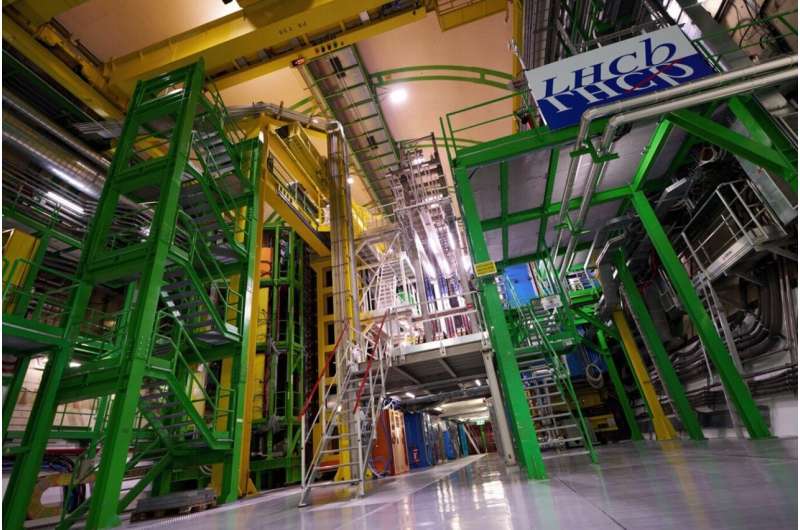This article has been reviewed according to Science X's editorial process and policies. Editors have highlighted the following attributes while ensuring the content's credibility:
fact-checked
trusted source
proofread
LHCb investigates the rare Σ+→pμ+μ- decay

The LHCb collaboration reported the observation of the hyperon Σ+→pμ+μ- rare decay at the XV International Conference on Beauty, Charm, Hyperons in Hadronic Interactions (BEACH 2024) in Charleston, South Carolina, U.S. A hyperon is a particle containing three quarks, like the proton and neutron, including one or more strange quarks.
Rare decays of known particles are a promising tool for searching for physics beyond the Standard Model (SM) of particle physics. In the SM, the Σ+→pμ+μ- process is only possible through "loop diagrams": rather than the decay happening directly, intermediate states need to be exchanged in a "loop," as illustrated in diagrams (a) and (b) below.
In quantum field theory, the probability of such a process occurring is the sum of the probabilities of all possible particles exchanged in this loop, both known and unknown. This is what makes such a process sensitive to new phenomena.
If a discrepancy between the experimental measurement and theoretical calculations was observed, it could be caused by a contribution from some unknown particles. These particles could either be exchanged in the loop or mediate this decay directly, interacting with the quarks and then decaying into a pair of muons. In the latter case, shown in diagram (c) below, the new particle would leave a footprint in the properties of the two muons.

Studies of the Σ+→pμ+μ- decay were especially exciting thanks to a hint of a structure that had been observed in the properties of the muon pair in 2005 by the HyperCP (E871) collaboration. With only three events, the structure was far from conclusive, and the LHCb study was expected to shine some light on the situation.
Ultimately, LHCb data does not show any significant peaking structures in the dimuon mass region highlighted by HyperCP, hence disconfirming the hint. The new analysis does, however, observe the decay with high significance, and precise measurement of the decay probability along with other parameters will follow, allowing further searches for discrepancies with SM predictions.
More information:
Observation of the Σ+→pμ+μ- rare decay at LHCb.
indico.fnal.gov/event/62069/co … CH2024_GMartelli.pdf
Provided by CERN





















